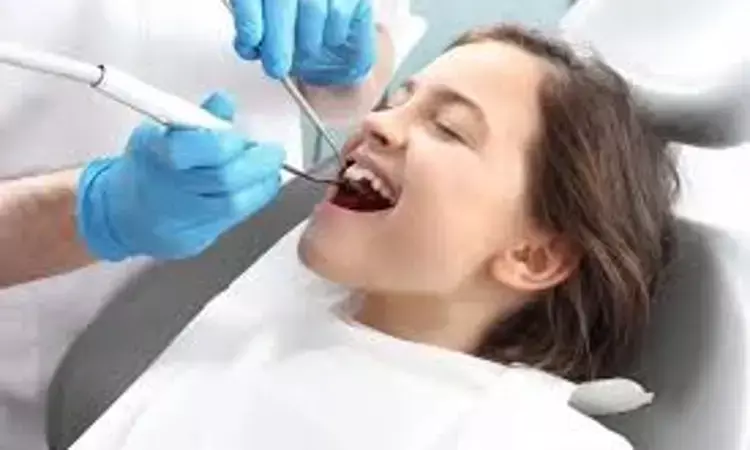- Home
- Medical news & Guidelines
- Anesthesiology
- Cardiology and CTVS
- Critical Care
- Dentistry
- Dermatology
- Diabetes and Endocrinology
- ENT
- Gastroenterology
- Medicine
- Nephrology
- Neurology
- Obstretics-Gynaecology
- Oncology
- Ophthalmology
- Orthopaedics
- Pediatrics-Neonatology
- Psychiatry
- Pulmonology
- Radiology
- Surgery
- Urology
- Laboratory Medicine
- Diet
- Nursing
- Paramedical
- Physiotherapy
- Health news
- Fact Check
- Bone Health Fact Check
- Brain Health Fact Check
- Cancer Related Fact Check
- Child Care Fact Check
- Dental and oral health fact check
- Diabetes and metabolic health fact check
- Diet and Nutrition Fact Check
- Eye and ENT Care Fact Check
- Fitness fact check
- Gut health fact check
- Heart health fact check
- Kidney health fact check
- Medical education fact check
- Men's health fact check
- Respiratory fact check
- Skin and hair care fact check
- Vaccine and Immunization fact check
- Women's health fact check
- AYUSH
- State News
- Andaman and Nicobar Islands
- Andhra Pradesh
- Arunachal Pradesh
- Assam
- Bihar
- Chandigarh
- Chattisgarh
- Dadra and Nagar Haveli
- Daman and Diu
- Delhi
- Goa
- Gujarat
- Haryana
- Himachal Pradesh
- Jammu & Kashmir
- Jharkhand
- Karnataka
- Kerala
- Ladakh
- Lakshadweep
- Madhya Pradesh
- Maharashtra
- Manipur
- Meghalaya
- Mizoram
- Nagaland
- Odisha
- Puducherry
- Punjab
- Rajasthan
- Sikkim
- Tamil Nadu
- Telangana
- Tripura
- Uttar Pradesh
- Uttrakhand
- West Bengal
- Medical Education
- Industry
Visual distraction most effective for reducing dental fear pediatric patients

Researchers have found that Visual distraction (VR) was found to be the most effective while Tell-Show-Do alone was the least effective behavior guidance technique in reducing dental fear/anxiety in uncooperative pediatric dental patients.
The study is published in the Journal of Indian Society of Pedodontics and Preventive Dentistry
Dental fear or anxiety is one of the major causes of uncooperative behavior and avoidance of dental treatment in children, which has been portrayed as a painful procedure, and therefore, children are more prone to develop fear either due to social factors or previous unpleasant experiences.
The American Academy of Pediatric Dentistry has outlined various behavior guidance techniques to deal with the problem, ranging from conventional Tell-Show-Do (TSD), voice control, to distraction. Distraction techniques, in the recent past, have gained immense popularity among pediatric dentists in managing uncooperative children. These techniques work by diverting the patient's attention from what may be experienced as an unpleasant stimulus.
Hence, Pratik Pande and his associates from the Department of Pediatric and Preventive Dentistry, Subharti Dental College and Hospital, Swami Vivekanand Subharti University, Meerut, Uttar Pradesh, India conducted the present study to compare and evaluate the effectiveness of four different behavior guidance techniques in managing uncooperative pediatric patients by measuring pre- and post-operative dental fear/anxiety levels using physiological and nonphysiological parameters.
Since the last few years, an increase in behavioral research through virtual reality (VR) and the virtual world has been witnessed. Depending on the immersiveness of the presented stimuli, the attention of the person will be more or less "drained" from the real world, leaving less attention to the real-world processes, including painful stimuli. VR distraction engages and integrates many sensory experiences, thus capturing a greater degree of attention. Therefore, the attention of the child is more focused on what is happening in the virtual world rather than the surrounding environment.
The authors systemically selected Sixty healthy children aged 5–8 years with negative behavior as per Frankl's Rating Scale, requiring restoration. They were randomly divided into four equal groups each with 15 children, based on the guidance techniques used: Tell-Show-Do (TSD) as a control group and audio distraction, audiovisual distraction (AVD) (virtual reality [VR]) and Mobile Phone Game Distraction as test groups.
Pre- and post-intervention levels of the child's fear/anxiety were assessed using both physiological (blood pressure and pulse rate) and nonphysiological (facial image scale) parameters.
The authors noted that there was a statistically significant difference in both physiological and non-physiological parameters post-intervention in the groups with a maximum decrease in the AVD (VR) group.
As a result, within the limitation of the study, the authors drew the following conclusions:
- Among the four behavior guidance techniques used in the study, the AVD (VR) proved to be the most effective technique for reducing dental fear/anxiety in children with negative behavior requiring dental treatment
- TSD alone was not found to be a very effective behavior guidance technique for child dental patients showing negative behavior
- The efficacy of various behavior guidance techniques were observed in decreasing order as- AVD (VR) > Mobile Phone Game Distraction > AD > TSD (Control).
Dr. Nandita Mohan is a practicing pediatric dentist with more than 5 years of clinical work experience. Along with this, she is equally interested in keeping herself up to date about the latest developments in the field of medicine and dentistry which is the driving force for her to be in association with Medical Dialogues. She also has her name attached with many publications; both national and international. She has pursued her BDS from Rajiv Gandhi University of Health Sciences, Bangalore and later went to enter her dream specialty (MDS) in the Department of Pedodontics and Preventive Dentistry from Pt. B.D. Sharma University of Health Sciences. Through all the years of experience, her core interest in learning something new has never stopped. She can be contacted at editorial@medicaldialogues.in. Contact no. 011-43720751
Dr Kamal Kant Kohli-MBBS, DTCD- a chest specialist with more than 30 years of practice and a flair for writing clinical articles, Dr Kamal Kant Kohli joined Medical Dialogues as a Chief Editor of Medical News. Besides writing articles, as an editor, he proofreads and verifies all the medical content published on Medical Dialogues including those coming from journals, studies,medical conferences,guidelines etc. Email: drkohli@medicaldialogues.in. Contact no. 011-43720751


